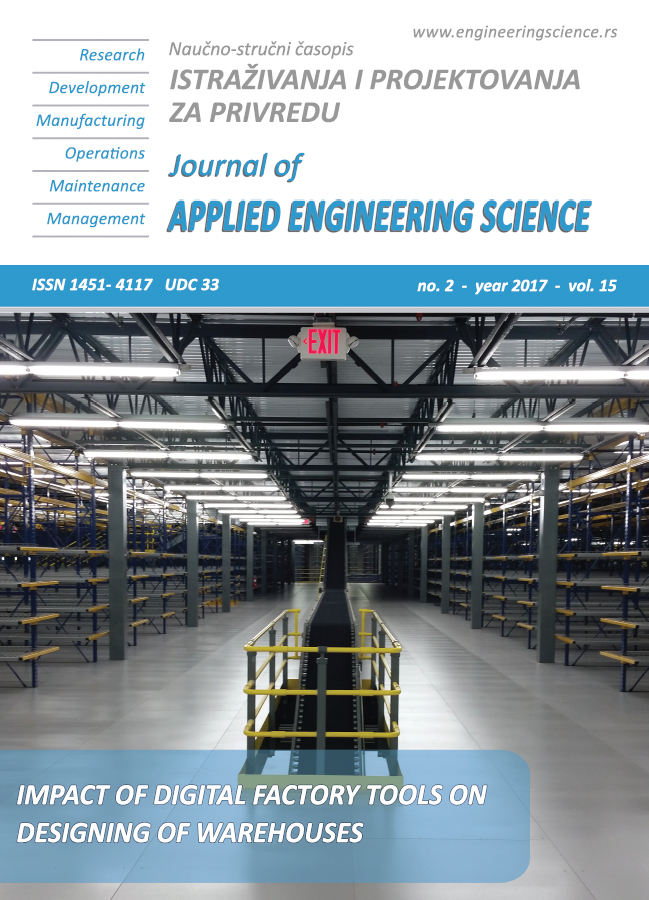ON THE QUESTION OF PREDICTING THE SERVICE LIFE OF LATTICE STEEL STRUCTURAL ELEMENTS
Abstract
Present paper deals with the evaluation of fatigue strength at crack initiation stage in the double angle elements of lattice steel structures.
The current construction norms for steel structures do not include check for fatigue strength at crack initiation stage, and the calculation of elements endurance limit does not account actual stress-strain state in stress concentration zones, material deformation characteristics in these areas, and strength properties of steel.
Experimental study of the stress-strain state kinetics in the areas of gusset plate breakage of double angle welded joints was carried out by strain gauge method. Results were obtained regarding the stress state stabilization under cyclic loading and stress intensity factor.
During cyclic tests, maximum load level varied depending on the yield stress. The formation of fatigue cracks was detected in the zone of gusset plate breakage.
The curve at fatigue cracks initiation stage, by deformational fracture criteria at "stiff" loading, was described by the equations presented in the "Standards of strength calculation of equipment and pipelines of nuclear power plants".
Calculation analysis of results for number of cycles before fatigue crack initiation has been made and good agreement with test results has been obtained.
References
Emelianov O.V., Bultykov A.V., Shuvalov A.N. (2012): Influence of Design Parameters of Elements Welded of Double Angles on the Level of Stress Concentration of Connection in the Zone of a Gusset Breakage, Industrial and Civil Engineering, 12, pp. 10-12
Eremin K.I., Makhutov N.A., Pavlova G.A., Shishkina N.A. (2011): The register of accidents of buildings and constructions of 2001-2010, Magnitogorsk: Magnitogorsk publishing, 318 p.
Kogaev V.P., Makhutov N.A., Gusenkov A.P. (1985): Calculation of machine parts and structures for strength and durability: handbook, Moscow: Mashinostroenie, 223 p.
Larionov V.V., Bogdyl' P.T. (1973): Study of the state of strain in welded joints using photoelastic coatings, in connection with strength at loading cycles, Low-Cycle Fatigue in Welded Structures, Seminar Materials [in Russian], Leningrad pp. 63-67
Makhutov N.A. (1981): Strain fracture criteria and strength design of structural members, Moscow: Mashinostroenie, 272 p.
Maksimovic S., Blazic M., Maksimovic M. (2010): Design of constructions with respects to fatigue and fracture mechanics, Journal of Applied Engineering Science, Vol. 8, No. 4, pp. 181-188
Perović Z.D. (2014): Accuracy of numerical methods for assessment of fatigue crack growth in welded joints, Zavarivanje i zavarene konstrukcije, vol. 59, no. 4, pp. 151-157
PNAE G-7-002-86. Standards of strength calculation of equipment and pipelines of nuclear power plants (1989): Moscow: Metallurgiya, 524 p
SP 16.13330.2011. Steel structures. The updated edition SNiP II-23-81* (2011): Moscow: OAO «TsPP» Publ., 173 p.
Tetelman A.S., McEvily A.J. (1967) Fracture of structural materials, New York: John Wiley, p. 186
Wood W.A. (1958): Recent observations on fatigue fracture in metals. ASTM STP 237, pp. 110-121

